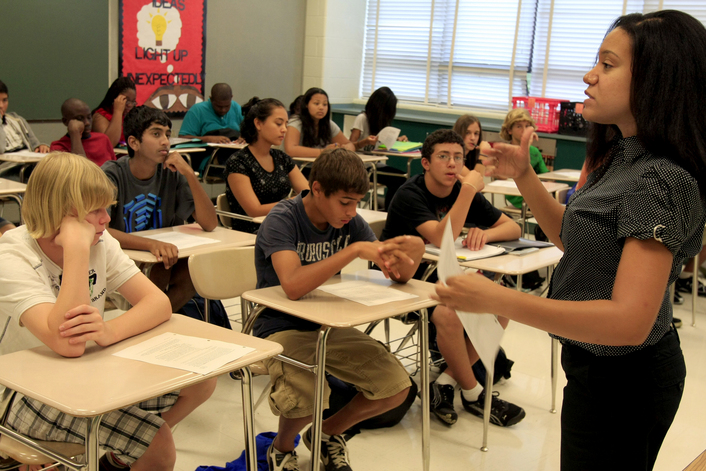
This photo was originally captioned “A Productive High School English Class.”
Grant Wiggins, who wrote the influential book Understanding by Design, posted this article, written by his daughter Alexis, a 15-year teaching veteran. Ms. Wiggins shadowed a pair of students for a day — one a senior and one a sophomore — to see what their experiences as students were really like. What she found was disheartening: an educational environment that had barely budged from the expectations and experiences of the 1950s. This article has been around for a while — it first appeared in 2014 — but it’s a powerful reminder that kids aren’t always doing what we think they’re doing in school.
There is ample evidence — really, just reams of it — that exercise and movement increase cognition, yet this principle has signally failed to make much impact on the activities of kids in high school. My hunch is that since the teachers are often moving around the room, they forget that their audience is held in a kind of stasis, passively absorbing (or not) information. My second hunch is that because of the siloed nature of high school classrooms teachers are largely unaware that a child’s entire day may be one of sitting motionless in a chair while a teacher holds forth on some topic.
It’s also critical to remember that those of us who went on to be teachers were generally good at ‘doing’ school: we learned just fine via lecture and reading, we may have had a decent work ethic, we weren’t usually disruptive because we knew what was going on. But we all knew kids that did not thrive in that environment and we need to remember that we are now teaching many students who are also not like us in the way they best take in and process new concepts. Their agency in determining class structure and activity is nil; they are, quite literally, at our mercy.
CMSi auditors observe classrooms all the time and what we see is in line with Ms. Wiggins’ observations, even in schools that think themselves cutting edge and express the expectation that classrooms will provide active learning for students.
What would you find if you shadowed a student in your district?
